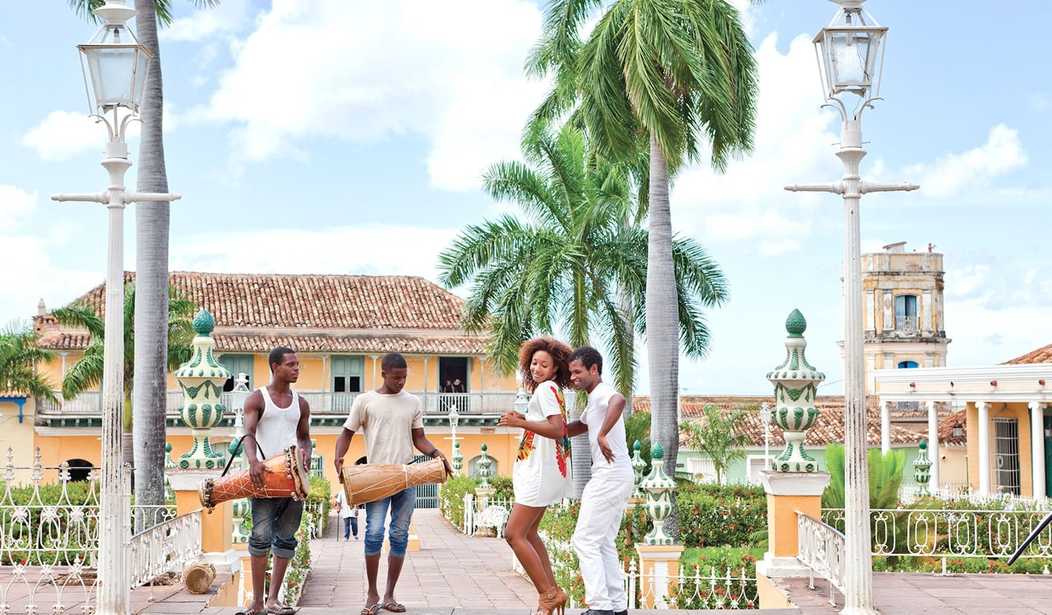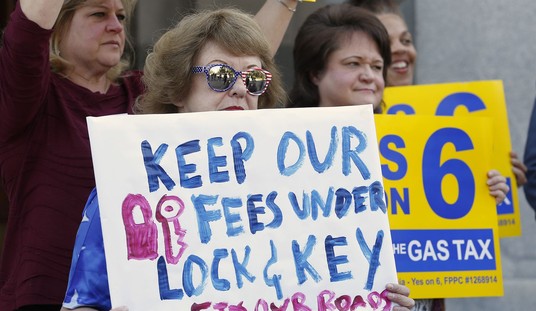In 2015, more Americans traveled to Cuba than at any time since the Cuban Revolution took place in 1959. The Wall Street Journal reports that since President Obama began his opening to Cuba in December of 2014, travel was up by 50% and is predicted to triple in 2016. Tour companies are now reporting that many hotels are booked up through next December.
Reported USA Today:
The U.S Tour Operators Association named Cuba its top emerging and off-the-beaten path destination followed by Myanmar, Iceland and Colombia. Ethiopia and Japan tied for fifth.
It used to be hard to go to Cuba, but not anymore. Travel and Leisure has informed its readers that as of January 1:
Travel to Cuba just got a little easier, thanks to a new set of regulations that take effect today and expand on President Obama’s recent policy changes.
All you have to do is sign a form saying that you are going there for one of 12 authorized reasons. Twelve. The reasons are so broad that virtually anyone can find something to check.
The magazine’s digital editor, Melanie Lieberman, writes:
Havana has become one of the most exciting destinations on our radar. It is now a real possibility that this year, anyone will be able to plan a trip there without signing up for a rigid people-to-people tour.
Verizon will have cell phone coverage there, regular commercial flights to Cuba will begin soon, and major cruise lines are planning to stop there regularly. As Lieberman puts it:
Visiting the capital is like stepping into a vintage photograph: washed-out colonial façades and cobblestone streets bustling with antique Fords and Chevys.
No publication has been an advocate for travel to Cuba more than the New York Times. On Sunday the paper outdid itself, featuring a long article by Damien Cave in its weekly “36 Hours” series. Cave lists 13 exciting things you can do in Cuba, which will “Get Your Groove On.” One restaurant he recommends epitomizes “The New Cool.” Cave says you can bar-hop at night, see new Cuban art, get nice views of the sea, smoke and buy those famous Cuban cigars, get a great Cuban cappuccino, and enjoy a wonderful “black ink seafood risotto.” You can end your stay by going to the famous white sand Varadero Beach, with its “pristine shores.”
And please — don’t forget your daiquiri at the bar favored by Ernest Hemingway.
To make the trip even more enticing, at the top of the Times website, you can view a video. As one of the young hip Cubans tells the interviewer:
All eyes are on Cuba. It’s trendy.
The video shows young people singing and dancing in a club, Cuban families enjoying a beautiful beach on the weekend, and middle-aged American tourists perusing an art gallery.
This is the Cuba that is reserved for well-off Western tourists.
And you’d have to be. If you go to travel websites or groups that have tours of Cuba scheduled, most will cost between $5000 to $7000 for less than a one-week trip.
You won’t be shown the truth about Cuba, you’ll get the “trendy” experience of a Potemkin village tour. You will be shepherded around the restored center of old Havana, restored tourist sites like Hemingway’s villa, and the Partagas tobacco factory. If you still need convincing about Cuba’s “New Cool,” you will meet with groups of Cubans who will make it appear that life is good and normal under the Castro brothers.
Of course, life is not wonderful for the majority of the Cuban people.
For an honest look at Cuba, watch the 2012 movie Una Noche. A commenter on IMBD writes:
The film reveals parts of the city not only unfilmed, but rarely accessed by outsiders before. As an energetic ride through one day and night in raw and gritty Havana, Una Noche captures the passion of its people, the despair in their lives, but also the love and laughter they share.
You can also learn about the real Cuba by reading James Kirchick’s cover story that appeared in National Review last May:
Aside from a few carefully well-preserved plazas outside the main tourist hotels, Havana is much dirtier and more run down than I imagined. Walking down its narrow streets, I was reminded of bombed-out sections of Beirut, heaps of rubble and trash strewn about the decaying buildings.
Steps from a billboard splayed with Castro’s visage and some revolutionary verbiage, a woman picked through garbage. At a pharmacy, I watched a man purchase Band-Aids — individually, not by the package.
Clearly no tourist on any existing tour will see what Kirchick witnessed. Nor will he or she learn that in the past year the Cuban regime arrested 8000 dissidents, and regularly sends its security police to harass, beat up, and threaten dissenters.
Recall that one brave man seeking to approach the pope in his recent trip — he was dragged away and beaten in front of the pope’s eyes. Two years ago, Castro’s secret police murdered the leading Cuban dissident Oswaldo Paya.
Obama never even asked for concessions from the Cuban regime that would have eased its repression of its own citizens in exchange for the United States agreeing to an opening long demanded by the Castro brothers.
But go get your groove on, Damien Cave.
Rather than applaud Obama’s new Cuban policy, many Cuban are voting with their feet. Even the New York Times reported, in the same edition of the Times as the travel story appeared, that since the new policy took effect thousands of Cubans are fleeing the country, because they fear that the Obama administration will void the 1966 Cuban Adjustment Act. The Act gives Cubans who manage to get to the United States a fast track to legal residency, and then the ability to obtain a green card.
Right now, 11,000 Cuban refugees are languishing in Central America, stuck because Nicaragua, which honors the Cuban regimes’ requests, is forbidding them from crossing into border nations that would allow them to travel to the United States.
Last year alone, 30,000 Cubans made it to our Southwest border — a 77 percent increase from 2014.
Why would so many Cubans flee their country if things are going so well?
The hype about the “New Cool” does not include the information that the average Cuban cannot find a job and lives in a hovel that is next to unlivable. If he or she has a job? They receive a pittance. Recall the left’s championing of the Cuban healthcare system during the Obamacare fight? Cuban doctors sent abroad to countries like Venezuela and Brazil are paid an average of $22 a month — far less than the Cuban hotel workers and taxicab drivers you might see on your Potemkin Village tour — and the Sun-Sentinel reports that many of the doctors the regime so proudly sends abroad choose to defect to the U.S. once they arrive at their assigned post.
One of the theories prevailing among supporters of the new policy is that once Americans travel to Cuba, the country will be brought into the modern world, political repression will be reduced and eventually end, and that Cubans will learn from American visitors what genuine democracy is.
Actually, the opposite was more likely to occur, and already is occurring.
The regime is tightening its control of the population, taking measures that firm up its power, and is using Western travelers’ vacation cash to further enrich the apparatchiks and the regime’s leaders.
Meanwhile, the organized Potemkin village tours — approved by the regime’s tourist bureau and designed to send Westerners home with the impression that the country is thriving and is in wonderful hands — are working wonderfully. Just listen to starry-eyed Melanie Lieberman.
So what can we do? Aside from not traveling to the island, I have one suggestion.
The only thing to do right now is to prevent the possibility that Obama will end the Cuban Adjustment Act by executive action before he leaves office. Obama has already said that he hopes to make an official visit to Cuba before his term is over. Such a visit, before the Cuban government has made any concessions at all that limit its ability to control the populace, will further legitimize the dictatorship.
It does not appear to concern the Obama administration that, by giving the Cuban government what it wanted without demanding anything in return, the United States condemned the Cuban people to suffer under a stronger regime. Those beaches and hotels aren’t for them, just for Western tourists to spend time in what they mistakenly see as vacation paradise.









Join the conversation as a VIP Member